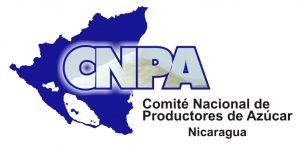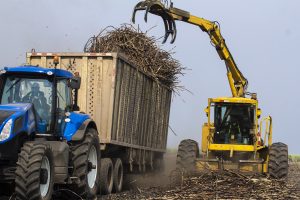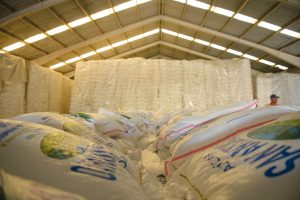16th November 2017
Nicaragua is a country with a long history of sugarcane cultivation, processing and trade. In January 2018 it will host Bonsucro Week, Bonsucro’s flagship annual event for sustainable sugarcane.
 The week includes visits to two of Nicaragua’s sugarcane mills, San Antonio and Monte Rosa. Both mills are members of the CNPA, the Nicaraguan Sugar Producers’ Association, and Bonsucro’s organizing partner. We spoke to Mario Amador, the CNPA’s General Manager, to get an overview of the country’s sugarcane industry and its work on sustainability.
The week includes visits to two of Nicaragua’s sugarcane mills, San Antonio and Monte Rosa. Both mills are members of the CNPA, the Nicaraguan Sugar Producers’ Association, and Bonsucro’s organizing partner. We spoke to Mario Amador, the CNPA’s General Manager, to get an overview of the country’s sugarcane industry and its work on sustainability.
What is the status of the Nicaraguan sugarcane industry today?
 “The Nicaraguan sugar industry has transformed itself into an agro-energy model which cultivates more than 70,000 hectares of sugarcane and is made up of more than 800 sugar cane producers and 4 sugar mills (San Antonio (part of the Pellas Group), Monte Rosa (part of Pantaleón Group), Casur (part of the Mayaguez group), and Montelimar. In the 2016-2017 harvest, the sugar production reached approximately 708,000 MT and around 645 GWh of energy were generated, 60% of the total sugar production was exported and 40% is consumed locally by the industry and final consumer.
“The Nicaraguan sugar industry has transformed itself into an agro-energy model which cultivates more than 70,000 hectares of sugarcane and is made up of more than 800 sugar cane producers and 4 sugar mills (San Antonio (part of the Pellas Group), Monte Rosa (part of Pantaleón Group), Casur (part of the Mayaguez group), and Montelimar. In the 2016-2017 harvest, the sugar production reached approximately 708,000 MT and around 645 GWh of energy were generated, 60% of the total sugar production was exported and 40% is consumed locally by the industry and final consumer.
“It is a source of more than 35,200 direct jobs and more than 135,000 indirect jobs. The Nicaraguan sugar industry is highly competitive worldwide due to its good agronomic practices, its lands, its climate and its industrial yields.”
Communities:
 “It is important to highlight that salaries in the sugar industry are highly competitive and sugar mills workers obtain benefits that go beyond what local labor laws dictate. For example, employees and their families receive free health care that exceeds the provisions of the Social Security of Nicaragua, either in their own hospitals and/or in mobile clinics that provide care in the field, educational programs are developed and financing is provided for the training of the employees and their families. Freedom of Association and a gender equality policy, mainly in managerial and technical positions, are promoted.
“It is important to highlight that salaries in the sugar industry are highly competitive and sugar mills workers obtain benefits that go beyond what local labor laws dictate. For example, employees and their families receive free health care that exceeds the provisions of the Social Security of Nicaragua, either in their own hospitals and/or in mobile clinics that provide care in the field, educational programs are developed and financing is provided for the training of the employees and their families. Freedom of Association and a gender equality policy, mainly in managerial and technical positions, are promoted.
“The CSR policies that are implemented in communities around the mills are a source of progress since they represent investments in different sectors such as local health care clinics, remodeling and construction of schools, parks, bridges, electrification and sanitation works, repair of roads, among many. Besides, school supplies for children and young people from schools in the region are provided, medical mission support is brought to the communities that benefit thousands of residents and local initiatives are supported at the municipal level.”
Businesses:
“The sugar industry value chains involves more than 800 sugar cane suppliers, hundreds of transporters, suppliers of various inputs, repair shops (service companies), among others. The industry encourages and promotes the formation of multiple mini-business activities through micro-credit programs for commercial and production working capital, such as rice and plantain production, and for working capital of small industry and services.”
One mill is now Bonsucro certified, and others are working towards Bonsucro certification. How is Bonsucro perceived within Nicaragua’s industry, and what value do you think it can bring to your members?

“The Nicaraguan sugar industry has as an objective that by 2018, 100% of Nicaraguan sugar mills will be Bonsucro certified, being convinced that this is the best way to competitively differentiate in international markets.
“Carlos Pellas Chamorro, Nicaragua Sugar Estates Ltd Chairman, on his inauguration speech at the ‘First Exchange of Experiences for Transferring Bonsucro Good Practices’, stated:
“Producing sugar is also about sustainability, which is becoming increasingly not only a demand from our clients but an appreciated value to our society: Producing sugar with high social and environmental standards is an important competitive advantage, that soon will start producing positive outcomes. It doesn’t make any sense in the 21st century to produce sugar mindlessly or at the lowest cost, that is no longer sustainable.
We must do it in a sustainable way, implementing as far as possible the best labour practices, which means not to be limited solely to what our labour law establishes.
Our production systems can’t affect our environment, and most importantly, it’s not enough to do things well; very soon, it will be a requirement that our systems and process are audited and certified under parameters and standards established by global and independent institutions.”
Bonsucro Week is coming to Nicaragua in January – how can you see this as benefitting Nicaragua’s sugarcane industry? And how might others from around the world learn from Nicaragua’s work on sustainability?
“Bonsucro has achieved international leadership and recognition under the commitment of sustainability, bringing together the largest sugar consumers, traders, and producers. Given this, it’s an honour for Nicaragua to be the host of Bonsucro week, which is also a recognition for the hard work the Nicaraguan sugar industry is doing to become sustainable.
“Ingenio San Antonio was chosen as a role model in Latin America, after the non-profit organization, Solidaridad Network, knew its best practices in situ. For this reason, from April 17 to the 21, 2017, the “First exchange of experiences for the transfer of good practices Bonsucro”, was held in Nicaragua. Its objective was to contribute to accelerating changes in the sugarcane sector of Mexico, Central America and the Caribbean. The event was attended by sugar mills that are part of PanAmericaña, Bonsucro representatives, AICA and CNPA members, private Nicaraguan sugar producers, La Isla Network and independent consultants, among others.”
Bonsucro Week 2018: To find out more about Bonsucro Week 2018, go to the event website.
CNPA: Get in touch with the CNPA here.





